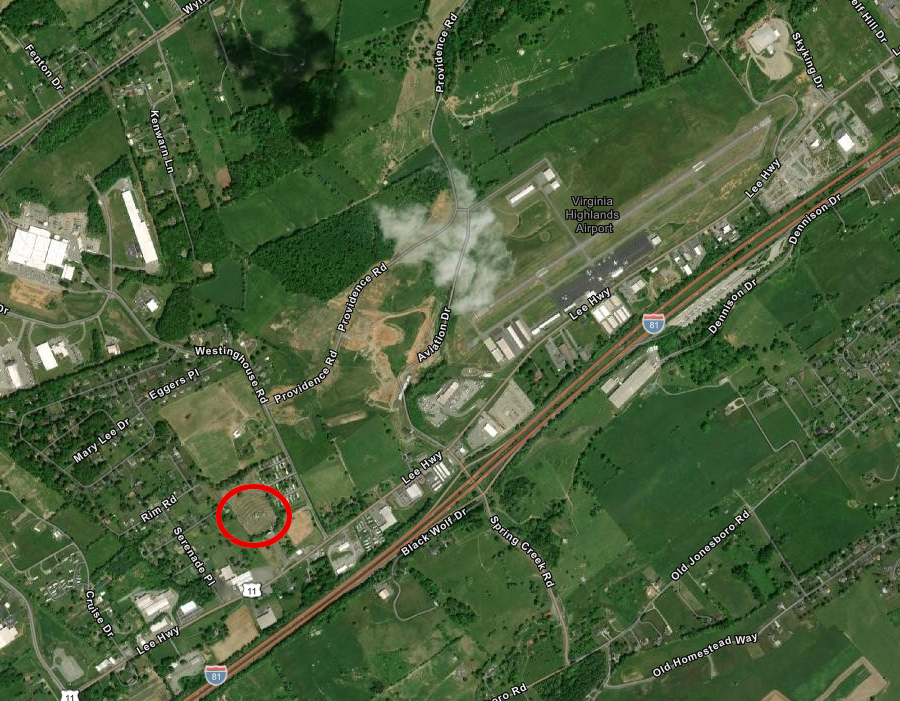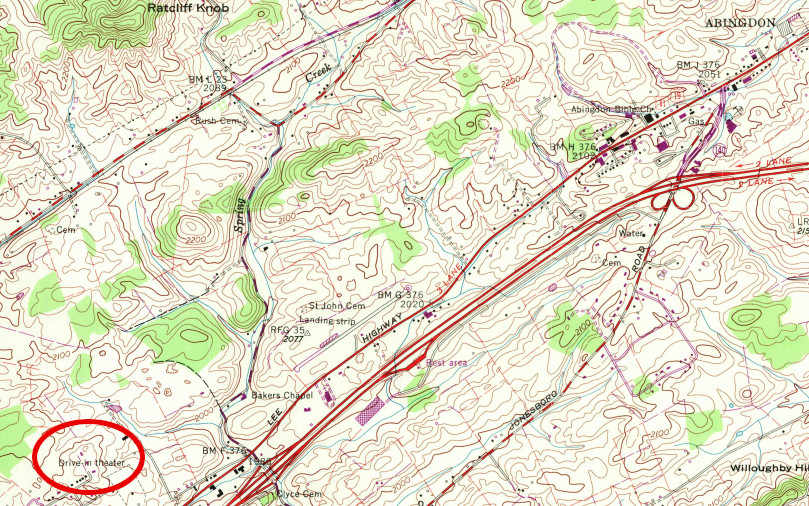
runway expansion at Virginia Highlands Airport required removing tall trees at the Moonlite Drive-In (red circle)
Source: ESRI, ArcGIS Online

runway expansion at Virginia Highlands Airport required removing tall trees at the Moonlite Drive-In (red circle)
Source: ESRI, ArcGIS Online
Virginia Highlands Airport at Abingdon started as a small dirt strip in a farmer's field in 1958. An employee of Appalachian Power Company initiated construction of the new field, in order to live in Abingdon and fly to work on construction of the Clinch River Power Plant in Russell County.
As I-81 was built, Abingdon and Washington County recognized the economic benefits of having an airport. They arranged for paving one 2,800-foot long, 40-foot wide runway. The narrow and short runway limited use to recreational flying until 1986, when a new 3380-foot long, 75-foot wide runway was completed. In 1990, the runway was extended again to 4,470 feet.
The Airport Commission was reconstituted as the Virginia Highlands Airport Authority in 2007, with Washington County supervisors appointing one representative from each magisterial district. Stating in 1996, even before the authority was formed, the focus was on obtaining funding to complete another runway extension. The long-range plan called for adding another 1,400 feet, making the facility far more attractive for 15-passenger business jets.
The manager of the airport commented in 2009, when he anticipated opening a 5,500-foot runway in 2016:1
The authority was able to obtain $24 million to extend the runway to 5,500 feet by 2023. Washington County provided just 2%. The Federal Aviation Authority provided 90%, with a series of grants in 2018-2020. The Virginia Department of Aviation provided 8%. The extension required cutting down trees at the Moonlite Drive-In, a half-mile southwest of the runway.
Only 70 planes were based at Virginia Highlands Airport, including just seven jets. One advantage in getting $24 million in Federal/state grants was that the general aviation airport was busy enough to make a profit. The chair of the Washington County Board of Supervisors commented:2

the drive-in theater (red circle) was far from the dirt landing strip in 1960
Source: US Geological Survey (USGS), Wyndale VA 1:24,000 topographic quadrandle (1960)